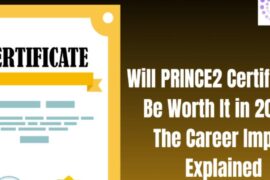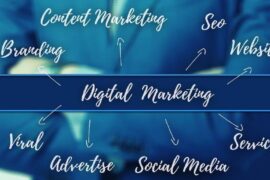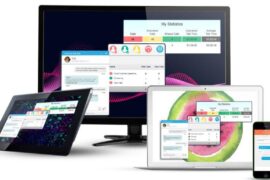Think about the moment you enter a brick-and-mortar store. If you can’t instantly tell where the checkout, fitting rooms, or customer service desk are, you hesitate. Online visitors feel the same. The structure they meet in the first seconds shapes every click that follows. In other words, easy navigation in website user experience and leads to sales is not a luxury—it’s the scaffolding that holds revenue aloft.
1. What “Easy Navigation” Really Means
“Easy” is not a design trend or a minimalist aesthetic. It is a measurable quality that shows up when people:
- Recognize where they are at a glance.
- Predict where a click will land without reading fine print.
- Recover quickly from wrong turns.
When those three jobs are friction-free, your navigation is doing silent, profitable work.
2. Why Clear Paths Translate Directly to Revenue
Every hesitation costs micro-seconds of cognitive energy. Enough micro-seconds add up to lost trust—and lost carts. When navigation removes that friction, three revenue-building effects emerge:
- Lower bounce rates: Users who arrive and instantly understand the map tend to stay and explore.
- Higher click-through on commercial pages: Clear labels (“Shop Women’s Trail Shoes”) outperform vague ones (“Collections”).
- Shorter path to purchase: Reduced clicks equal fewer chances to abandon.
Collectively, those gains snowball into higher profit without additional ad spend.
3. The Psychology Behind Seamless Flow
Humans navigate websites with the same mental shortcuts (“heuristics”) they use in real-world environments:
| Heuristic | Real-World Example | Web Corollary |
| Landmark recognition | Spotting a checkout sign | Logo linked to home |
| Floor plan recall | Knowing grocery aisles | Persistent header menu |
| Way-finding cues | “You are here” maps | Breadcrumb trails |
Addressing these instincts transforms wandering visitors into confident buyers.
4. Six Core Principles for Building Effortless Navigation
4.1 Keep It Shallow
- Aim for no more than three clicks from any landing page to a transaction.
- Flatten deep category trees and merge overlapping subpages.
4.2 Speak the Customer’s Language
- Use industry-standard terms your shopper would Google.
- Replace “Utilize” with “Use,” “Solutions” with “Products,” and “Personnel Resources” with “Our Team.”
4.3 Stay Consistent, Page to Page
- Menu order should not shuffle between views.
- Icons should look identical on mobile and desktop.
4.4 Respect the Fold on Mobile
- Test thumb reach: primary calls-to-action (CTAs) go within the natural “thumb zone.”
- Collapse secondary items into an accessible hamburger or tab system.
4.5 Make Search a Co-Pilot
- Autocomplete common queries.
- Show quick-filter tags under the search box to discourage pogo-sticking between results and category pages.
4.6 Offer Breadcrumbs and Exit Ramps
- Breadcrumbs reduce the fear of getting lost.
- “Back to results” links ease comparison shopping without resetting filters.
5. Mapping Navigation to the Buyer Journey
A page hierarchy that mirrors intent keeps visitors moving forward:
| Funnel Stage | Visitor Mindset | Ideal Navigation Touchpoint |
| Awareness | “I have a problem.” | Blog, resource center, FAQs |
| Consideration | “Which solutions exist?” | Category hubs, comparison tables |
| Decision | “This looks right.” | Product pages, testimonials, checkout |
| Post-Purchase | “Will they support me?” | Account dashboards, help centers |
Tie each stage together with context-aware CTAs—for instance, “See sizing guide” on a product page.
6. The Role of Internal Linking and Anchor Text
Search engines read links as votes of relevance. Visitors read them as directional signs. Combine both by weaving internal links with descriptive anchors such as Website UX and Sales.
Guidelines:
- Insert naturally inside body paragraphs; avoid footers full of keyword dumps.
- Use varied but related phrases: “UX boosts revenue,” “user-friendly store design,” etc.
- Link upward (to parent categories), sideways (to siblings), and down (to detailed articles).
7. Technical Foundations That Multiply Results
7.1 Information Architecture (IA)
A simple XML sitemap helps crawlers index pages fast, reinforcing the logic that humans see.
7.2 Core Web Vitals
Navigation’s CSS and JavaScript should be lightweight to keep Largest Contentful Paint (LCP) and Cumulative Layout Shift (CLS) within Google’s green thresholds. Faster paints equal happier users—another ranking factor.
7.3 Schema Markup
Add BreadcrumbList schema. Search engines may then display breadcrumb links in results, encouraging click-through.
8. Accessibility Isn’t Extra; It’s Essential
Inclusive navigation expands your market and complies with regulations:
- Keyboard operability: All menu items are reachable via Tab and Enter.
- Aria-labels: Screen-reader friendly descriptions (“Main navigation,” “Product category list”).
- Contrast ratios: Text over 4.5:1 for body, 3:1 for large headings.
Accessible sites earn goodwill and often outperform in organic search because many competitors still neglect these standards.
9. Real-World Scenario: Trail Gear Co.
Trail Gear Co.—a fictional outdoors retailer—ran two A/B tests:
| Metric | Old Navigation | New, Simplified Navigation |
| Average time to checkout | 3 min 40 sec | 2 min 05 sec |
| Cart abandonment | 68% | 42% |
| Revenue per session | $2.87 | $4.98 |
What changed?
- Collapsed five top-level menus into three (“Shop,” “Learn,” “Support”).
- Added sticky breadcrumb trail.
- Indexed on-site search with a synonym dictionary.
The lesson: fewer choices plus smarter way-finding yields measurable profit.
10. Measuring Success: The Right KPIs
| KPI | Why It Matters | Healthy Benchmark* |
| Navigation CTR | Checks if labels inspire clicks | 60-70% of menu impressions |
| Time to First Interaction | Gauge clarity on arrival | < 8 seconds |
| Cart Funnel Completion | Shows path friction | > 35% for retail |
| Return Visitor Rate | Validates trust | > 25% monthly |
*Benchmarks vary by industry. Track deltas over time, more than absolute numbers.
11. Common Pitfalls—and Swift Fixes
- Mega-menus stuffed with every SKU.
Fix: Use progressive disclosure—reveal sub-categories on hover or tap. - Duplicate category names (“Shop” vs “Store”).
Fix: Consolidate and redirect duplicates to one canonical page. - Misaligned mobile and desktop labels.
Fix: Write once, deploy responsively. - Overusing carousels for navigation.
Fix: Replace with static collections; most users skip auto-rotating content.
12. Advanced Tactics for 2025 and Beyond
12.1 AI-Driven Personal Menus
Predictive menus reorder links based on past behavior. A returning camera shopper sees “Mirrorless Deals” first.
12.2 Voice and Gesture Navigation
Smart-TV shoppers already navigate by voice. Structuring headings (<h1>-<h6>) semantically today prepares sites for tomorrow’s voice parsers.
12.3 Micro-interactions
Subtle tactile feedback—like a gentle vibration on a mobile when a link is tapped—confirms action and reduces accidental double clicks.
Conclusion: Navigation as an Unseen Sales Team
A website can win awards for color palette or typography, yet still leak revenue if visitors must hunt for answers. Easy navigation in website user experience and leads to sales is the silent negotiator convincing each prospect to stay, explore, and buy. Treat it with the same rigor you give paid ads or product photography.
When in doubt, walk through your site as a first-time visitor. Ask, “Where am I? Where can I go next? How do I get back?” If any answer feels hazy, clarity—and higher profit—is waiting just a few menu tweaks away.































